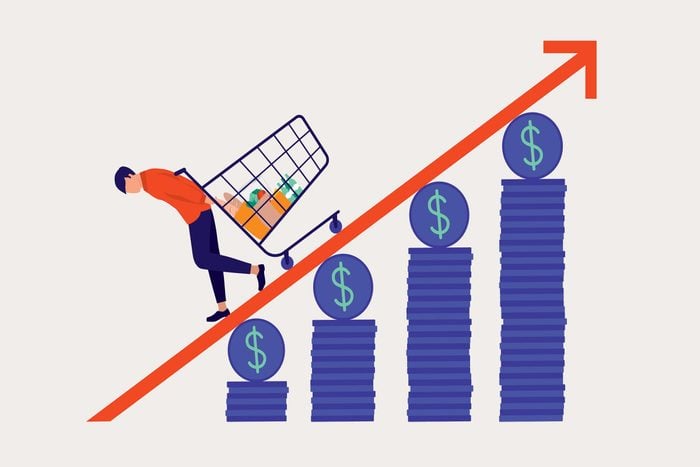Fight Shrinkflation: This Resource Can Help You Spot Products That Are Quietly Shrinking in Size
Updated: Dec. 08, 2022

A consumer advocate's website called Mouse Print is calling out companies who are selling less for more.
We all know prices are rising. Inflation has reached 40-year highs and overall prices have risen over 8 percent. But that’s only part of the story. From rising gas prices to a supermarket prices spiking up over 13 percent to prices on staples like butter and flour rising nearly 25 percent. Even more under the radar is the gnawing sense that we’re getting less product for more money. That’s not your imagination. That’s shrinkflation and it’s very real.
You might never realize things are shrinking: At least, that’s what brands are hoping. They figure consumers are more sensitive to higher prices than smaller sizes, so they reduce weight and volume first.
What is shrinkflation?
Shrinkflation can look like products with suspiciously smaller amounts selling for the same price as before. Or the products themselves might be changing in what is sometimes called “skimpflation”: cough syrup that’s diluted to half the active strength or the milk, cream, and sugar in your favorite ice cream replaced with cheaper bulking agents like corn syrup and whey protein.
The Bureau of Labor Statistics follows the phenomenon, and registers shrinkflation as a type of price increase, according to Yahoo Finance. Steve Reed, an economist at the Bureau of Labor Statistics, gives an example of pricing a 64-ounce container of orange juice. “We try to price it and it’s only 59 ounces,” Reed said. “Maybe it’s the same price, but for 59 ounces instead of 64 ounces, that’ll be computed as a price increase.”
The categories where package size shrinkage is seen the most, according to Reed, includes “certain snack type items and also household paper products, your toilet paper, paper towels.”
How to spot shrinkflation
Thankfully, advocates exist to help consumers push back against companies that engage in shrinkflation. One consumer advocate, Edgar Dworsky, who runs the anti-shrinkflation site Mouse Print, was recently profiled in the New York Times. The site name, according to Dworsky, refers to the fine print often found on packaging that’s so tiny “only a mouse could read.”
This week we reveal a new trick by breakfast cereal makers — They’re playing games on which boxes “Family Size” and “Giant Size” are placed. “Family” is moving to 18 oz boxes from 23/24 oz , and “Giant” is now on the old family size. #ProtectConsumers https://t.co/L3PxvsPbpL pic.twitter.com/M59TSMFuNJ
— Consumer World (@consumerworld) September 19, 2022
According to the Times, Mouse Print alerts consumer to examples of companies trying sell less for more. Examples would be bags of dog food that shrank from 50 to 44 pounds or bottles of detergent that look similar but come with less detergent. One of Mouse Print’s biggest warning has been, “Beware Tricky Cereal Box Names.” He’s found that certain cereal boxes switched from “giant” to “family” size, growing an inch taller, but a few ounces lighter.
What shrinkflation has Mouse Print uncovered?
So many brands these days are engaging in shrinkflation, it’s almost too hard to list. Everything from Scott’s paper towels, with 20 percent less paper fiber to Hungry Man Chicken Dinners, with 15 percent less protein to Smart Balance butter substitute spread, with 40 percent less vegetable oil and more water.
Dworsky writes, “More and more companies are adding size names to breakfast cereal boxes, cookies, and chips.‘Large Size,’ ‘Party Size,’ ‘Family Size,’ ‘Giant Size,’ and even ‘Mega Size’ are now adorning product packages. In a sense, this is a very clever ploy by manufacturers to teach shoppers to buy by size name rather than by net weight.”
Sources:
- New York Times: “Meet the Man on a Mission to Expose Sneaky Price Increases”
- Yahoo Finance: “How ‘shrinkflation’ amid rising food prices is ‘just like a magic show'”